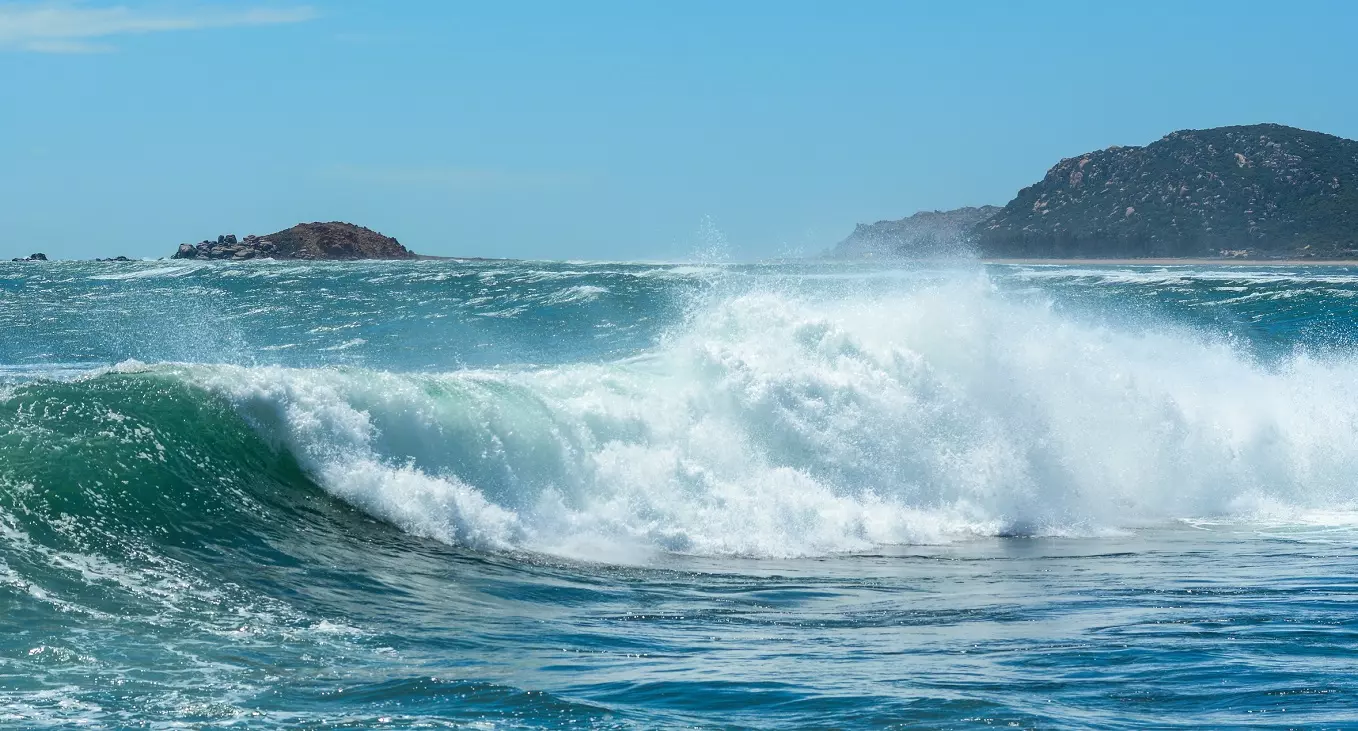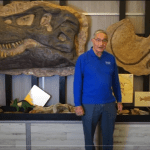Part 3 of “Connecting the Dots of the 9th ICC Presentations.” Also see Part 1 and Part 2
There are two main positions for the Postflood boundary
- at the K/P boundary, which is between the Cretaceous and Paleocene (or just after the dinosaur fossils, yet before most of the mammal fossils)
- and in the upper Cenozoic between the Pliocene and Pleistocene.
Two main points were made for the K/P boundary. Paul Garner said the continental strata were laid during the Flood while regional strata are Postflood. Therefore, the boundary should be on top of the continental strata and beneath the regional.
The second point was the continuation of species found in both the Pliocene and Pleistocene within the same general location. In other words, Postflood animals should not leave the ark and go live on the graveyards of those from the Flood. This point was made by both Dr. Kurt Wise and Dr. Marcus Ross.
Dr. Steve Austin’s presentation was not focused on the Flood boundary but on the transgressive terraces of the ancient Hopi Lake. Since he believes the quick draining of the Postflood Hopi Lake is what carved Grand Canyon, I think he would draw the Flood line at the K/P boundary.
Dr. Tim Clarey believes the Flood boundary should be drawn high, between the Pliocene and the Pleistocene. He based his boundary on geological data gathered from thousands of oil well core samples. He believes there is too much sediment, especially limestone and coal, in the Tertiary for it to have formed Postflood. He made many other good points as well, but the limestone and coal seemed to be his main reason for a high boundary.
Mike Oard also believes the boundary should be drawn high due to the huge volume of sediment, especially “evaporates.” He believes these were actually formed from precipitation from the Flood waters, not left behind by evaporation. He pointed out that phosphorous beds, which are mostly found above the K/P and in the Precambrian, support both the lower Preflood boundary and the higher Postflood boundary. He particularly pointed out that the high-elevation alligator and palm fossils found in the Green River Formation were from the Flood.
These are all very logical, research-based points, but they contradict each other.
Why and how would Postflood animals return to the same locations where the Preflood animals had been buried? On the other hand, how did the vast amount of limestone, coal, and precipitates such as phosphates form Postflood?
Is there any way to reconcile these conflicting points and connect the dots?
Taking the Flood’s Late Stages into Account
When it comes to the extensive strata, I think Mount St Helens may hold the key. Just like the sediment that filled the Toutle River Valley during Mount St Helen’s eruption varied depending on the stage of the eruption, so earth’s strata would have varied in size and composition depending on the stage of the Flood.
So, continental strata becoming regional could mark the beginning of another Flood stage rather than the end of the Flood. When the earth was eroded smooth beneath the global sea, the strata would have been continental. But, as God raised the mountain chains, the sediment would have slid off, becoming regional strata filling the valleys and spreading out upon the plains. Currents would then carve windbreaks through the mountains, forming more sediment, which would make more regional, boulder-filled strata.
Dr. Steve Austin’s presentation on Hopi Lake and the carving of Grand Canyon seems to point to a lower Flood boundary. However, as the Flood retreated, there would have been a point in time when the earth would have been covered by many mega lakes separated by mountain ranges. As the water continued to drain, transgressive terraces would have formed around these lake’s shores.
What About the High, Land Animal Fossils?
The continuation of species found in both the Pliocene and Pleistocene within the same general location and the vast amount of limestone, coal, and precipitates are difficult dots to connect. The vast amount of limestone, coal, and precipitates do seem to indicate a need for a higher Flood boundary. But, if the line is drawn between the Pliocene and Pleistocene, how can the fossils be reconciled? The Postflood animals should not have left the ark and traveled across the globe to live on the graveyards of those from the Flood.
As in logic puzzles, there must be a solution. And it is here that I will add another dot of my own. If the line is drawn at the K/P border, then that means the dinosaurs were buried during the Flood, but the mega mammal fossils were somehow formed Postflood.
Mammals leaving the ark and traveling across the globe only to be buried and fossilized after the Flood has its own set of difficult questions:
- Where are the fossils of the mammals that died during the Flood?
- Why would dinosaur fossilization require the Flood but not mega mammal fossilization?
- Why are there only African and Asian elephants today when there are a variety of elephant fossils found all over the world? How did the Ice Age cause a bottleneck of the elephant kind and location?
- How did all the mammals manage to become so widely dispersed from the ark?
- How did they cross mountains?
- What did they eat during the dark, cold Siberian winter?
Hannibal attempted to bring 37 war elephants across the Alps, but only one survived.
- How did the Ice Age cause continental, yet not worldwide, extinction? At least a few of the camels, horses, and elephants in North America should have survived and repopulated North America after the Ice Age.
Maybe the boundary actually belongs above the Pleistocene. What if all the mammal fossils, like the dinosaur fossils, are the remains of animals that died during the Flood?
When I work the logic puzzles, I do not try to make one continuous line. I make a lot of short connections and then return to connect those lines. That is what needs to be done here. We are going to leave these dots and jump to another part of the puzzle.
This dot is not about the Flood boundary per se, but it is relevant to the topic. Dr. Steve Gollmer presented his computer simulation work on a rapid ice age and ice sheet growth. His main point seemed to be that he could not get the ice sheet to build during the 300 years following the Flood. Many problems kept occurring, some of which were:
- the snow would fall over the ocean,
- the ice would also build in Siberia,
- or the ocean would freeze, preventing evaporation.
Years ago, the creation movement as a whole dismissed the Canopy Theory. (For the record, I do not agree with that dismissal, but that is a topic for another article.) The dismissal does show how creation scientists were willing to release their hold on a long-standing view. Perhaps it is time now to consider dismissing the Ice Age Theory. The dots connect if the boundary is raised so that all the mammal fossils, like the dinosaur fossils, are the remains of animals that died during the Flood. Of course, there would be a continuation of species found in both the Pliocene and Pleistocene within the same general location if they were all buried during the Flood.
The geological evidence attributed to the Ice Age can also be interpreted as being formed by underwater mudflows or avalanches. Sand avalanches in the Monterey Canyon, off the coast of California, form structures so similar to moraines that the avalanches are referred to as “sand glaciers.”1 While secular scientists believe there were five major Ice Ages, some creationists say the earlier four were actually Flood deposits.2 If the earlier four were caused by the Flood, couldn’t the fifth be as well?
No Need to Rely on a Postflood Ice Age to Explain Other Realities
One of the main solutions the Postflood Ice Age provides is the creation of land bridges needed for mammal and man migration. But, with the biblical perspective of early man being very intelligent, there is no need for land bridges. If Noah had the capability needed to build the ark, surely his descendants, who had the capability of building the Tower of Babel, could have built sea-worthy boats. Just as the Spanish brought horses to America, so the people migrating from the Tower of Babel would have brought animals along too. When some groups reached the sea, they would have built boats and brought their animals on board with them. Other mammals, such as bears and moose, could have swum across without the need for a land bridge.
In summary
Due to the violent beginnings of the Flood, which would have produced vast quantities of sand and other sediments, I think the Preflood boundary should be placed between the granite and the first sedimentary strata. The Great Unconformity would then mark the beginning of a new Flood stage rather than the beginning of the Flood, and the bacteria grew in situ once the strata were laid.
As for the Postflood boundary, due to the large amount of limestone, coal, and phosphate deposits, the boundary needs to be raised much higher than the K/P boundary. But the line can not be drawn between the Pliocene and the Pleistocene due to the continuation of fossils throughout the Pliocene and the Pleistocene; the Postflood boundary should be placed above the Pleistocene. I think that all mammal bone beds were formed from animals that drowned during the Flood. So, just as in the logic puzzles, the dots are connectable, just not always in the way we originally think the lines should be drawn.
References
- Video from Scientific American mentions underwater features being formed by a “glacier of sand.”
- Mike Oord has a monograph making the claim that earlier ice ages were Flood events.







